RENEGADE GARDENER™
The lone voice of horticultural reason
The 2012 Renegade Gardener High Spot / Black Spot Awards
 1-4-2013 – A gracious good evening to you all, and thanks for waiting! Live from the 7 Clans Casino in Thief River Falls, Minnesota, it’s the Renegade Gardener High Spot/Black Spot Awards!
1-4-2013 – A gracious good evening to you all, and thanks for waiting! Live from the 7 Clans Casino in Thief River Falls, Minnesota, it’s the Renegade Gardener High Spot/Black Spot Awards!
My apologies for the awards program starting several days behind schedule, but following last year’s fiasco in Hawaii, we are indeed fortunate that this year’s awards ceremony is viable to limp into its 13th year. “Don’t you ever show your face on this island again!” is not the manner of interlocution I choose to have with any officer of the law, female or not.
So please finish up your slot play, be seated, and let’s start giving out the awards!
Black Spot Award
Most Pandering Press Release: Paw Paw Everlast Plant Markers
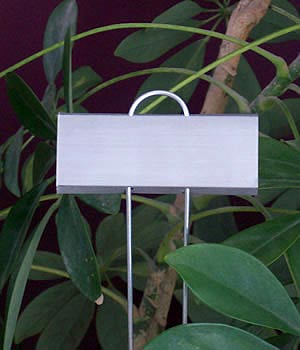 The only drawback to receiving press releases electronically these days is that simply hitting “delete” when you get a laugher is not nearly so satisfying as saving them for starting a bonfire in the back yard. This winning press release from spring, 2012, attempts to intrigue by asking questions I find dubious:
The only drawback to receiving press releases electronically these days is that simply hitting “delete” when you get a laugher is not nearly so satisfying as saving them for starting a bonfire in the back yard. This winning press release from spring, 2012, attempts to intrigue by asking questions I find dubious:
• Do you ever look at a beautiful plant in your garden and wonder what it is?
My answer? No! I look at a beautiful plant in my garden and in my mind quickly affirm its botanical Latin name plus the name of the company, university, or individual breeder responsible for its inception. Duh.
• As you add plants to your garden, do you ever forget what you have and where they’re planted?
A thousand times no! When you buy a jar of peanut butter and put it in the pantry, do you ever not know that you have an unopened jar of peanut butter in the pantry? Same with adding plants.
• Have you ever dug up the starts of an ugly weed only to discover that it was really a perennial you purchased at the end of last summer?
For the love of God, stop! This is what happens when garden product manufacturers hire young college graduates with degrees in marketing or communications. They know nothing of gardening. They live in apartments and still smoke pot on weekends. It’s like listening to Taylor Swift or Justin Bieber sing about love. They have some talent but only a vague, second-hand awareness of the topic they’re singing about. You can’t sing about love until you’re fifty. Listen to Leonard Cohen or post-2000 Bob Dylan sometime. FYI, Paw Paw, all gardeners know their perennials from weeds as they emerge in the spring. Or should.
High Spot Award
Perennial of the Year: Martagon Lilies
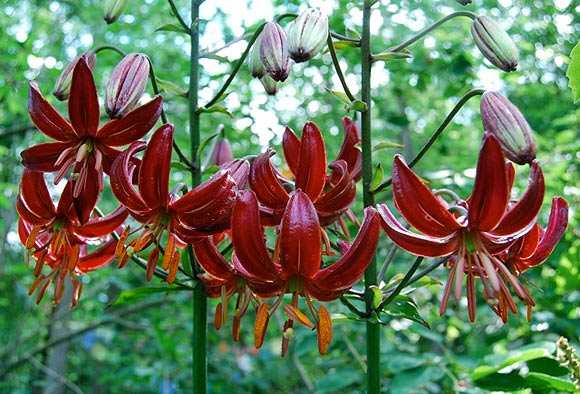 |
| ‘Claude Shride’ |
People aren’t planting bulbs as they used to. Bulb sales are way down across the US and Canada, as the nursery industry resolutely continues its quest to create new perennials that will thrive in potter’s clay and flourish from neglect. You aren’t gardening until you master bulbs, and Martagons are nothing tricky.
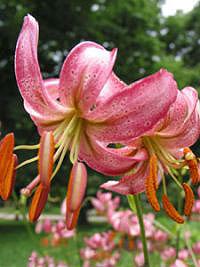 |
| ‘Margaret Mauve’ |
Also known as Turk’s Cap lilies, Martagons are the one type of lily that prefers part shade. I grew them for years in a spot that received only a few hours of morning sun, and they were a delight. Dappled shade works well. You can create scenes of tall, vertical sculpture amid the hosta and other relatively low-growing shade/part shade perennials.
Like all true lilies, Martagons expand rapidly by producing new bulbs around the original. Division and replanting of these bulbs in fall expands your supply at a prodigious rate. Plants are extremely long-lived.
Here’s a great, brief guide to planting and growing Martagon Lilies: Martagons
Here’s a lovely article on discovering Martagons: Article
Here are two great nurseries for mail-order Martagons (it’s the way to go):
Black Spot Award
Scotts Miracle-Gro Company Guilty of Violations of Federal Pesticide Laws
Do you see, Garden Writers Association (GWA)? This is why you don’t accept sponsorship cash from garden industry corporations, when part of your members’ responsibilities are reporting on garden industry corporations. When Scotts became an official sponsor of the GWA a few years back, some members quit, including yours truly. I couldn’t in good conscience rip a company for their products and use recommendations when they were also subsidizing the cost of my chicken dinner at the annual GWA awards ceremony.
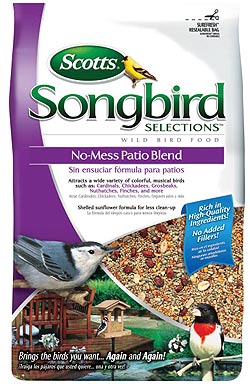 Then this shoe dropped: On September 7, 2012, The Scotts Miracle-Gro Company was sentenced in federal district court in Columbus, Ohio and will pay $12.5 million in criminal fines and civil penalties for violations of federal pesticide laws.
Then this shoe dropped: On September 7, 2012, The Scotts Miracle-Gro Company was sentenced in federal district court in Columbus, Ohio and will pay $12.5 million in criminal fines and civil penalties for violations of federal pesticide laws.
In a plea bargain, Scotts admitted that it applied the pesticides Actellic 5E and Storicide II to its bird food products even though the EPA prohibits their use. Scotts had attempted this sleight of hand to protect its bird food products from insect infestation during storage. Scotts further admitted that it used these pesticides contrary to EPA directives and in spite of the warning label on Storicide II containers stating, “Storicide II is extremely toxic to fish, birds, and other wildlife.”
Scotts knowingly sold the illegally treated bird food for two years as it rolled out its new line of bird food products, and for six months after employees warned Scotts management of the dangers of these pesticides. By the time it voluntarily recalled these products in March 2008, Scotts had sold more than 70 million units of bird food illegally treated with pesticide that is toxic to birds.
 At the time of discovery of this illegal use, the EPA also began a civil investigation of Scotts that uncovered numerous civil violations spanning five years, including nationwide sale of unregistered, canceled, or misbranded pesticides under Scotts’ ORTHO brand. As a result, the EPS issued more than 40 Stop Sale, Use or Removal Orders to Scotts to address more than 100 pesticide products.
At the time of discovery of this illegal use, the EPA also began a civil investigation of Scotts that uncovered numerous civil violations spanning five years, including nationwide sale of unregistered, canceled, or misbranded pesticides under Scotts’ ORTHO brand. As a result, the EPS issued more than 40 Stop Sale, Use or Removal Orders to Scotts to address more than 100 pesticide products.
Some of the more commonly used ORTHO products involved in the settlement are:
- ORTHO Brush-B-Gon Poison Ivy & Poison Oak Killer
ORTHO Weed-B-Gon Killer for Lawns
ORTHO Bug-B-Gon MAX Lawn & Garden Insect Killer
ORTHO Home Defense Insect Killer
ORTHO Malathion 50 Insect Spray
ORTHO ProSelect Roach, Ant & Spider Killer
Neither Ashton Ritchey nor the new Scotts’ spokesperson – the fiery, red-haired Scott – were available for comment.
High Spot Award
Shrub of the Year: Clethra ‘Sugartina’
Trade Name: Clethra alnifolia‘Crystalina’ PPAF
Common Name: Summersweet
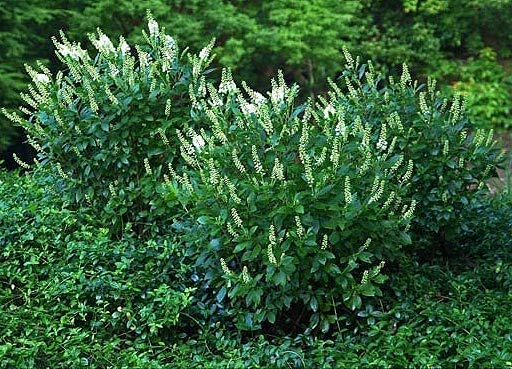
This new Clethra cultivar has everything the judges look for in a Shrub of the Year winner: attractive foliage (glossy dark green), large, fragrant flowers (5” spires, white), a rounded, dwarf stature (fabulous around trees or as foundation shrubs in the perennial garden), and they are in no way a slam-dunk to grow. Love of gardening required.
But you can handle it. You’ve just never tried. Of all the shrubs I plant for clients, Clethra is one of two I regularly use that homeowners most often have never heard of (the other is Fothergilla). I cannot figure out why; the list of mid-size deciduous shrubs that look vibrantly alive and bloom heartily in shade is not that long, folks, regardless of your USDA Zone.
Clethra is a butterfly magnet, and one of the most fragrant shrubs you’ll find. Plant it near entrances to the home, or beneath bedroom windows that are left cracked open at night. Plants bloom in mid- to late summer, when few other shrubs offer fresh bloom. Plants often grant a nice fall color change to pale yellow, and offer decent winter form.
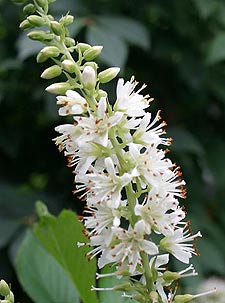 The few things to know to successfully grow Clethra are these:
The few things to know to successfully grow Clethra are these:
Plants prefer acidic soil with ample organic matter. It’s like growing Rhododendrons; you can’t simply pick a spot and slam the thing in. You should get a soil test done, find out the pH and organic content with which you are starting, and go from there. Soil sulfur should be added to soil widely around plants at time of planting (or the year before) if soil has neutral to alkaline pH. Ample amounts of peat moss serve as a good organic supplement to the soil, as it will help achieve acidity.
Then you need to mulch and keep plants watered. Clethra does not like to dry out. Weekly watering with a soil that retains moisture will make the plants happy. Dappled shade or as little as two to three hours of direct sunlight sometime during the day is perfect, if you get the soil right. You can grow Clethra in full sun, but need to mulch plants well and water twice a week. If your soil is not naturally acidic, scratch in additional soil sulfur around plants ever couple years.
‘Sugartina’ is petite for a Clethra variety, height ranging right around thirty inches with an equal spread. It’s a great shrub for small properties, and to plant in front of evergreen shrubs. I included Clethra in a design for a client couple ten years ago because their property contained quite a bit of shade, and when they sold the house and bought another one for me to landscape four years ago, this was their one demand: Plant more Clethra. Growing range zones 4-9.
Black Spot Award
Biggest Boondoggle: California Legislators Bungle Proposition 37
Labeling of genetically engineered food has been a hot topic for a decade, a portion of Americans insisting that if all or some of a food item sold at retail consists of grains or other plants that have been produced via genetic engineering, the consumer has a right to know. It’s a small portion of Americans, granted, but it is certainly a reasonable request.
 So it came as quite a surprise that in the recent election cycle, California Proposition 37, Mandatory Labeling of Genetically Engineered Food, was defeated by voters, 53% to 47%. Heavens, if you can’t pass a law requiring the labeling of food containing GE crops in California (the state that passed Proposition 65, requiring cancer warnings on virtually every tangible item one can eat, drink, touch, or glance at from afar), in what state can you?
So it came as quite a surprise that in the recent election cycle, California Proposition 37, Mandatory Labeling of Genetically Engineered Food, was defeated by voters, 53% to 47%. Heavens, if you can’t pass a law requiring the labeling of food containing GE crops in California (the state that passed Proposition 65, requiring cancer warnings on virtually every tangible item one can eat, drink, touch, or glance at from afar), in what state can you?
So who blew it? One can probably start with California trial lawyer James Wheaton, founder and president of Oakland’s Environmental Law Firm, who was the true author of the bill presented by the legislature. Wheaton and his firm have generated over $12 million from lawsuits filed as a result of Proposition 65, which became law in California in 1986.
Here’s the rub: Wheaton was a part of the team that wrote and worked to pass Prop 65 as well. According to the California Attorney General Office, Prop 65 has generated more than 16,000 legal actions against California businesses and produced nearly $500 million in legal fees and settlements, the vast majority of which has gone to trial lawyers. Reduction in cancer cases in California as a result of Prop 65 during this time? Uh, well… it’s made California an even more health-conscious state.
In a nutshell, Proposition 37 was a deceitfully conceived, non-specific jumble of words with ramifications clearly capable of opening up a Pandora’s Box the size of the Grand Canyon for litigation lawyers to play in. From the FLASHREPORT.org website:
“Cleverly dressed up as a consumer ‘right to know’ measure, Proposition 37 is another red herring by and for trial lawyers. It contains a bounty hunter provision allowing for trial lawyers to file predatory lawsuits against farmers, grocers, and food producers alleging labeling violations, but requires no proof of any damages prior to filing the lawsuit. For those being sued, the decision comes down to simple math: Spend tens of thousands of dollars to engage defense lawyers and testing labs to fight in court to prove innocence, or settle with the plaintiff’s attorney for less. According to State Legislative Analyst, under Prop 37 lawyers can file suit without needing to demonstrate that any specific damage occurred as a result of the alleged violation. In other words, guilty until proven innocent.”
And that was an important component of Prop 37, when you consider that over 400 scientific studies have been conducted on these crops, and virtually every respected medical, health and scientific body has concluded that GE crops pose no safety risk, including the American Medical Association, National Academy of Sciences, World Health Organization, US Food & Drug Administration, and more than twenty-five Nobel Prize winning scientists. Prop 37 rendered all research and opinion moot.
Similar to Prop 65, which has become a money tree for trial lawyers, Prop 37 was designed to open up even greater avenues for income to lawyers via lawsuits. Food safety was simply the façade. Even the Los Angeles Times, hardly an adversary of liberal, health-conscious Californians, recognized the pitfalls to Prop 37, and recommended a “no” vote.
Hey California, the next time you want to pass a proposition requiring labeling of GE foods, start with experts in the food industry, introduce them to a few good legislators with expertise in writing bills, and leave the trial lawyers out of it. There is a difference between a good idea and a good idea written as a bad law. Labeling GE foods for consumers makes perfect sense, and should have been a slam-dunk. Come up with a state proposition that does that, allowing for a fair amount of time to implement, while annulling the legal lawsuit loopholes, and it’ll pass in a landslide.
Further Reading:
Why Did Prop 37 Fail? Food Safety News
High Spot Award
Best News of the Year: Return of the Chestnut Tree
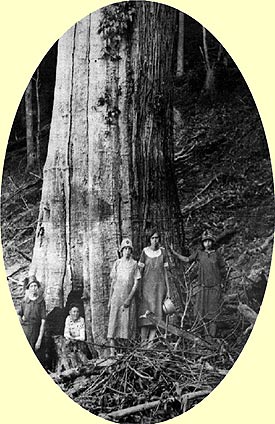 If you live in the eastern or southeastern United States, don’t you love those towering, majestic chestnut trees that grace your neighborhoods and wilderness areas? Of course you don’t. Starting in the early 1900s, Asian bark fungus was inadvertently introduced into North America from imported Asiatic chestnut trees, and by 1950, our native American chestnuts (Castanea dentata) were virtually wiped out – some three billion trees.
If you live in the eastern or southeastern United States, don’t you love those towering, majestic chestnut trees that grace your neighborhoods and wilderness areas? Of course you don’t. Starting in the early 1900s, Asian bark fungus was inadvertently introduced into North America from imported Asiatic chestnut trees, and by 1950, our native American chestnuts (Castanea dentata) were virtually wiped out – some three billion trees.
Quite a pity. The American chestnut was a king among trees, growing rapidly to 100 feet tall and 10 feet in diameter. Their arching canopies and brilliant white spring flowers inspired poets. Trees ranged from Maine to Mississippi, across the Appalachian Mountains and into the Ohio Valley. Chestnuts comprised one-fourth of Eastern North American forests. Prized for its straight-grain, rot-resistant wood, chestnut was a staple for structural beams, lumber and furnishings, and was used in home, barn and wagon construction from the arrival of the pilgrims straight through to the start of the twentieth century.
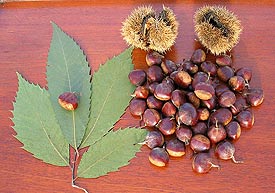 As important, trees produced chestnuts, called “the bread of the mountains” to those living in the Appalachians. Humans and all manner of wildlife depended on chestnuts for sustenance, particularly the black bear. Chestnuts were widely harvested as a food crop, and sold across the US and Europe. Then, the fungus hit.
As important, trees produced chestnuts, called “the bread of the mountains” to those living in the Appalachians. Humans and all manner of wildlife depended on chestnuts for sustenance, particularly the black bear. Chestnuts were widely harvested as a food crop, and sold across the US and Europe. Then, the fungus hit.
As with the American Elm, total extinction did not occur. Across the east and as far south as Alabama, chestnut trees outside the main population areas survived. The largest remaining stand of chestnut trees is near West Salem, Wisconsin, some 2,500 chestnut trees growing on 60 acres, the result of less than a dozen trees planted by an early settler. Tucked away in the Upper Midwest, the fungus missed them.
 Now tree lovers have entered the picture. The American Chestnut Foundation was formed, and is embarking on an aggressive breeding program aimed ultimately to reintroduce the American Chestnut to our nation’s eastern woodlands. By cross-pollinating remaining American Chestnuts with Chinese Chestnut trees – which are immune to the blight caused by the fungus – hybrids have been created, half Chinese Chestnut, half American. Cross-pollination between American Chestnut trees with this generation results in trees that are one-quarter Chinese, then one-eighth, etc. This process, which will take at least 30 years, will result in a strain of blight-resistant Chestnut trees that have more than 90 percent American Chestnut in their genetic backgrounds, and will resemble American Chestnut trees in look, leaf, and nut. Then the reforestation campaign will begin.
Now tree lovers have entered the picture. The American Chestnut Foundation was formed, and is embarking on an aggressive breeding program aimed ultimately to reintroduce the American Chestnut to our nation’s eastern woodlands. By cross-pollinating remaining American Chestnuts with Chinese Chestnut trees – which are immune to the blight caused by the fungus – hybrids have been created, half Chinese Chestnut, half American. Cross-pollination between American Chestnut trees with this generation results in trees that are one-quarter Chinese, then one-eighth, etc. This process, which will take at least 30 years, will result in a strain of blight-resistant Chestnut trees that have more than 90 percent American Chestnut in their genetic backgrounds, and will resemble American Chestnut trees in look, leaf, and nut. Then the reforestation campaign will begin.
At some point in the decades to come, you’ll no doubt see them for sale in nurseries for residential use. In the meantime, if you are in the market for a large, beautiful shade tree, plant an Elm. Same story, earlier start.
More Information:
The American Chestnut Foundation
American Chestnut Research and Restoration Project
Black Spot Award
Dumbest Faux Trend: Matching Plants to Pantone Colors
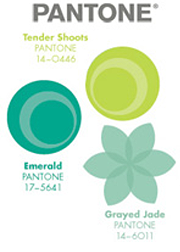 |
| Here you go folks. Memorize. |
This will be brief: We don’t get it. Someone in the gardening industry thinks that partnering with the color gurus at Pantone and announcing which Pantone colors are the new must-have shades for your garden is going to mean anything to anyone, or in some way increase garden plant sales?
Especially when the new color for 2013 is: green. From yet another unfortunately electronic e-mail newsletter: “Pantone, the world’s color authority, has announced three shades of green will be the hot colors in spring 2013. Green is the ‘little black dress’ of the garden!”
Excuse me? Green is the soiled, gray sweat pants balled up in the bottom of the laundry hamper of the garden. Written by a college graduate in Communications, I’m sure. The release continues:
“Here are just a few plants that match Pantone’s color forecast. Choose one of these plants to be in vogue in spring 2013!”
And then the release actually suggests names of plants with foliage that matches the Pantone colors, sort of. You want to be in vogue for spring, 2013? Plant a tree. Buy and install a rain barrel. Organize a neighborhood group to spend a few hours on weekends eradicating invasive plants in your area. Start a compost pile. Brew beer, then drink several bottles while sitting on your garden bench.
Rather than memorizing Pantone colors, memorize the botanical Latin names of your plants.
High Spot Award
Evergreen of the Year: Picea orientalis‘Aureospicata’
Common Name: Golden Spiked Oriental Spruce
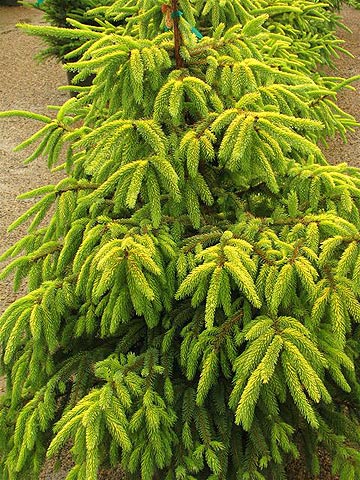 The advantage to gardening for multiple decades versus years is that one begins to develop a history with trees, what works in one’s yard, and what doesn’t. When it comes to evergreens, the longer you garden, the more you will trust spruce. Provided they’re not a blue variety. Dwarf blue spruces are highly dependable, but a Colorado Blue Spruce should be your choice only if you live in Colorado – or don’t mind having a blue evergreen that looks grand for 30 years, then dies. But I digress.
The advantage to gardening for multiple decades versus years is that one begins to develop a history with trees, what works in one’s yard, and what doesn’t. When it comes to evergreens, the longer you garden, the more you will trust spruce. Provided they’re not a blue variety. Dwarf blue spruces are highly dependable, but a Colorado Blue Spruce should be your choice only if you live in Colorado – or don’t mind having a blue evergreen that looks grand for 30 years, then dies. But I digress.
Aureospicata is a magnificent (non-blue) specimen tree with a narrow, pyramidal form and gracefully arching branches. The great commotion the tree will cause in your yard each year results from its spring growth – a stunning yellow that matures over summer to a rich, dark green.
This is a mid-size tree, maturing to fifty feet with a spread at the base of twenty-five to thirty. Plant it for a mature width of twenty-five feet, but that doesn’t mean it stands all by itself for thirty years. Surround it (or any evergreen tree) with medium to small shrubs and perennials of your liking, then move them as the tree grows wider.
Grown in full sun in average soil, fertilized once each spring and kept moderately moist, the tree will mature gracefully into a show-stopping centerpiece of the landscape. Zones 4-7.
Black Spot Award
Sloppiest Fact-Checking: The Renegade Gardener
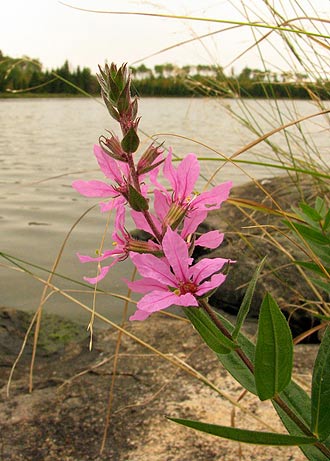 In May of 2012, I published an update on the site where at one point, I waxed eloquent about a “native wildflower” I had found and photographed growing along a granite shore in Northwest Ontario. I didn’t know the name, and had left my best plant identification books at the cabin when I returned to the States, with a camera full of photos.
In May of 2012, I published an update on the site where at one point, I waxed eloquent about a “native wildflower” I had found and photographed growing along a granite shore in Northwest Ontario. I didn’t know the name, and had left my best plant identification books at the cabin when I returned to the States, with a camera full of photos.
The update was on the site perhaps an hour before one of my most trusted and long-time readers shot me a polite e-mail stating that it sure looked like purple loosestrife to her. Purple loosestrife (Lythrum salicaria) being a non-native, notorious invasive plant from Europe and Asia that has spread across Canada and much of the upper US.
Oops. A little checking and I discovered the plant I had photographed was indeed purple loosestrife, though a different variety than the one on the Ontario Most Wanted posters. But an invasive, non-native plant nonetheless. So as opposed to past years, where we have always awarded at least one prize to a national magazine or website for completely screwing up some bit of plant information, growing tip, planting procedure, or product recommendation, this year the judges, with sinister gleams in their eyes, awarded the prize for Sloppiest Fact-Checking to me. I accept it with hat in hand and tail firmly between my legs. You are all fired.
High Spot Award
Eradication of Guinea Worm Disease

Thank you, Jimmy Carter. In 2012, the World Health Organization reported that Guinea Worm Disease, which has plagued humanity for thousands of years, is on the verge of eradication. No single person on the planet is more responsible for this achievement than former President Carter.
This is a disease that has been around for centuries. Its remains have been found in Egyptian mummies and the disease is alluded to in the Bible. The disease is transmitted through stagnant drinking water in ponds and wells containing Guinea worm larvae. Once ingested, the larvae grow into thread-thin worms inside the body, reaching a length of two to three feet. They then exit the body through an excruciatingly painful blister that can appear anywhere on the body, including the breast. Removing the worm by gently pulling can take from hours to months, during which time the human host is incapacitated by pain. The badly infected may have ten to a dozen worms mature in one year.
 The Carter Center first heard about this debilitating disease in 1986, and Jimmy Carter decided to do something about it. With private donations and a grant from the Bill and Melinda Gates Foundation, he spearheaded a worldwide campaign to end the disease, traveling across the globe to supervise water purification efforts. In 1986 there were an average of 3.5 million new cases of the disease each year spread across 21 countries, mainly in Africa and the Middle East. In 2012 only 391 new cases were reported. Across entire countries, the disease has been eliminated.
The Carter Center first heard about this debilitating disease in 1986, and Jimmy Carter decided to do something about it. With private donations and a grant from the Bill and Melinda Gates Foundation, he spearheaded a worldwide campaign to end the disease, traveling across the globe to supervise water purification efforts. In 1986 there were an average of 3.5 million new cases of the disease each year spread across 21 countries, mainly in Africa and the Middle East. In 2012 only 391 new cases were reported. Across entire countries, the disease has been eliminated.
What was key to this fabulous success story? Use of the synthetic chemical pesticide Abate®, manufactured by the mammoth chemical company BASF and used to kill the Guinea worm larvae in contaminated drinking water sources around the globe. The pesticide can be spread in water and not make the water harmful for human consumption. Abate® also is the synthetic chemical used to control mosquito populations, to stop the spread of malaria around the world, saving hundreds of thousands of lives each year.
So as with all things in life, you take the good with the bad. Synthetic chemicals and their manufacturers are not always to be scorned, folks.
High Spot Award
Best April Fools Joke: Dramm’s Colorflow Rainwands
 |
| Dramm’s “BEFORE” photo |
The sign of good April Fools joke is one you hear in April and don’t realize you’ve been had until nine months later. Last spring I read about the new Dramm Colorflow Rainwand designed to enhance flower colors in a nursery trade e-publication that was also caught with their pants down. It even published the before-and-after pictures supplied by Dramm, the Wisconsin-based manufacturer of watering wands. I downloaded them to keep for this awards show, since this new product immediately jumped to the head of the pack for Worst Gardening Product of the Year.
 |
| Dramm’s “AFTER” photo |
The official Dramm press release that I tracked down and printed off the Internet – dated 04/01/12 and complete with contact name and phone number – was horrifying:
“Brighten your world with Dramm’s new ColorFlow Rainwands. Available in six, eye-catching colors, the new ColorFlow wands are impregnated with a special, ultra-violet spectrum dye that enhances the colors in your garden. Use the Red ColorFlow Rainwand and your red geraniums will explode with color. The Berry ColorFlow Rainwand will make your petunias glow. Use the Green ColorFlow Rainwand to sharpen the greens throughout your garden and lawn.
The plant-based, UV spectrum die used in ColorFlow Rainwands is invisible to the naked eye, but reacts with pigments that occur in plants to produce a more vibrant color. In addition to the enhancement of color, utilizing Dramm’s ColorFlow Rainwands may actually enhance plant growth. Initial research suggests that our natural pigments help the plant select specific wavelengths of light needed for the variety, increasing photosynthesis. ColorFlow Rainwands will not discolor your patio, house or children and are completely safe.”
OK, so I didn’t read the press release that closely. But remember, my heart had stopped. In preparation of bestowing Worst Gardening Product of the Year award honors to Dramm (which would have been such a pleasure, those cheeseheads), I poked around the Dramm website this week to steal a picture of the new wand, and couldn’t find one. Finally, in the dark crevices of their site, I found the April 1 press release, and noted the bottom line contained a click for more information on ColorFlow Rainwands.
The click led to a page loudly proclaiming “April Fools!!”
Well played, Dramm.
Black Spot Award
Worst Gardening Product of the Year:
Silver Vase Nursery Dye-Infused Plants
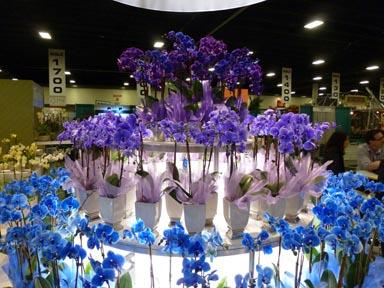 |
| Cue The White Stripes. |
The longer I garden, it gets only worse. Florida-based Silver Vase nursery, a wholesaler of orchids and bromeliads to the retail nursery industry, has released a line of dye-infused plants. That’s right. Similar to punk rock drummers, gangsta rappers, and the seventeen-year-old daughter who won’t attend counseling, the plants have been inked.
The mind reels. They’ve done it. They’ve literally taken a white orchid and turned it blue. Fans of the White Stripes’ 2005 album “Get Behind Me Satan” are now allowed time to shiver as they click their iTunes and play the song, “Blue Orchid.” In fact this is more than a little creepy. If you are not a fan of The White Stripes, their 2005 song, “Blue Orchid” begins with these lyrics:
You got a reaction
You got a reaction, didn’t you?
You took a white orchid
You took a white orchid and turned it blue…
Get behind me Satan, indeed. “Blue Mystique” was the first inked orchard brought to market by Silver Vase, and sold to consumers without being made aware that it was phony – and would revert back to white with its first new blooms.
Additional faux flowers have followed. The two newest dyed orchids are Mystic Lila (lavender) and Mystic Indigo (bluish purple). From yet another insufferable press release: “You’ll especially like Indigo for its stunning deep color… plus purple is super hot right now. And both colors are much more difficult to tell they aren’t real.”
This is not another April Fools joke. I’m not making this up; I’m not that good a writer. Neither is whoever wrote this, from the Silver Vase website:
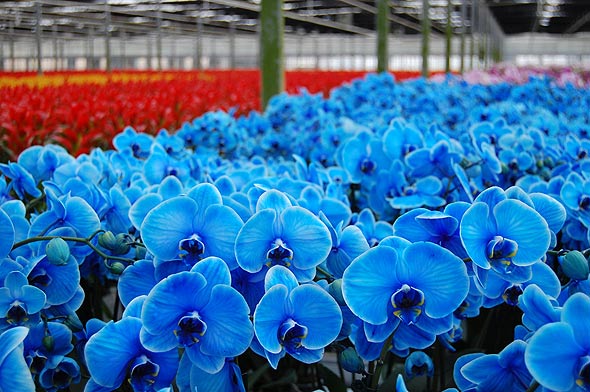 |
| Blue Mistake |
Blue Mystique: The World’s First Blue Phalaenopisis Orchid!
Buds on your Blue Mystique blue orchid’s current stem will open to flowers in a beautiful, lighter shade of blue. A new stem will probably bring white flowers, though it is too early to know for sure. It is assumed so, because Phalaenopsis orchids have a very strong natural ‘filtering system’ that protects them in the wild.
True to The White Stripes’ chilling omniscience, there indeed has been quite a reaction, soundly negative, with which I concur. I hate to be the guy in the mob holding a pitchfork as we charge toward Frankenstein’s castle, but then, the guy in the mob holding a pitchfork was doing the right thing.
Mississippi nurseryman and breeder Richard Drummond is quoted in the trade publication Greenhouse Grower as stating, “Anyone can dye a plant blue but I absolutely do not understand how this trickery can be legitimized by any respectable nursery, retailer, wholesaler, or broker. This is an insult to all true botanists – past, present and future – especially those who were intelligent, determined and astute enough to develop true varietal differences in orchids or any other type of plant.”
Well said. Better than the recent press release from Silver Vase that reminds, “Key is still to let your customers know they’ll rebloom white.” As if that bit of news is going to make it through to checkout sales people at most nurseries, specialty boutiques, mall kiosks and a dozen other kinds of venues where these abominations are sold.
It’s coming folks. I’ll bet my bottom dollar that inking will spread to a broad range of herbaceous perennials. You just watch. First will be blue day lilies. And do you know what will come after that? Watering wands with UV dye reservoirs that will change the color of blooms on your plants as you water.
This concludes the 2012 Renegade Gardener High Spot/Black Spot Awards – and just in time for the start of the 11:00 p.m. Texas Hold ‘Em Tournament in the poker room. If poker isn’t your thing, the end-cap “Queen of the Wild” slot machine nearest the Blackjack pit has been hitting all day. Thank you and good night!
Don Engebretson
The Renegade Gardener
- The 2018 Renegade Gardener High Spot/Black Spot Awards January 5, 2019
- The 2017 Renegade Gardener High Spot/Black Spot Awards January 1, 2018
- The 2016 Renegade Gardener High Spot/Black Spot Awards January 1, 2017
- The 2015 Renegade Gardener High Spot/Black Spot Awards January 1, 2016
- The 2014 Renegade Gardener High Spot/Black Spot Awards January 7, 2015
- The 2013 Renegade Gardener High Spot/Black Spot Awards January 1, 2014
- The 2012 Renegade Gardener High Spot/Black Spot Awards January 4, 2013
- The 2011 Renegade Gardener High Spot/Black Spot Awards January 1, 2012
- The 2010 Renegade Gardener High Spot/Black Spot Awards January 1, 2011
- The 2009 Renegade Gardener High Spot/Black Spot Awards January 1, 2010
- The 2008 Renegade Gardener High Spot/Black Spot Awards January 1, 2009
- The 2007 Renegade Gardener High Spot/Black Spot Awards January 3, 2008
- The 2006 Renegade Gardener High Spot/Black Spot Awards December 20, 2006
- The 2005 Renegade Gardener High Spot/Black Spot Awards December 9, 2005
- The 2004 Renegade Gardener High Spot/Black Spot Awards January 1, 2005
- The 2003 Renegade Gardener High Spot/Black Spot Awards November 19, 2003
- The 2002 Renegade Gardener High Spot/Black Spot Awards October 31, 2002
- The 2001 Renegade Gardener High Spot/Black Spot Awards October 16, 2001
- The 2000 Renegade Gardener High Spot/Black Spot Awards October 20, 2000